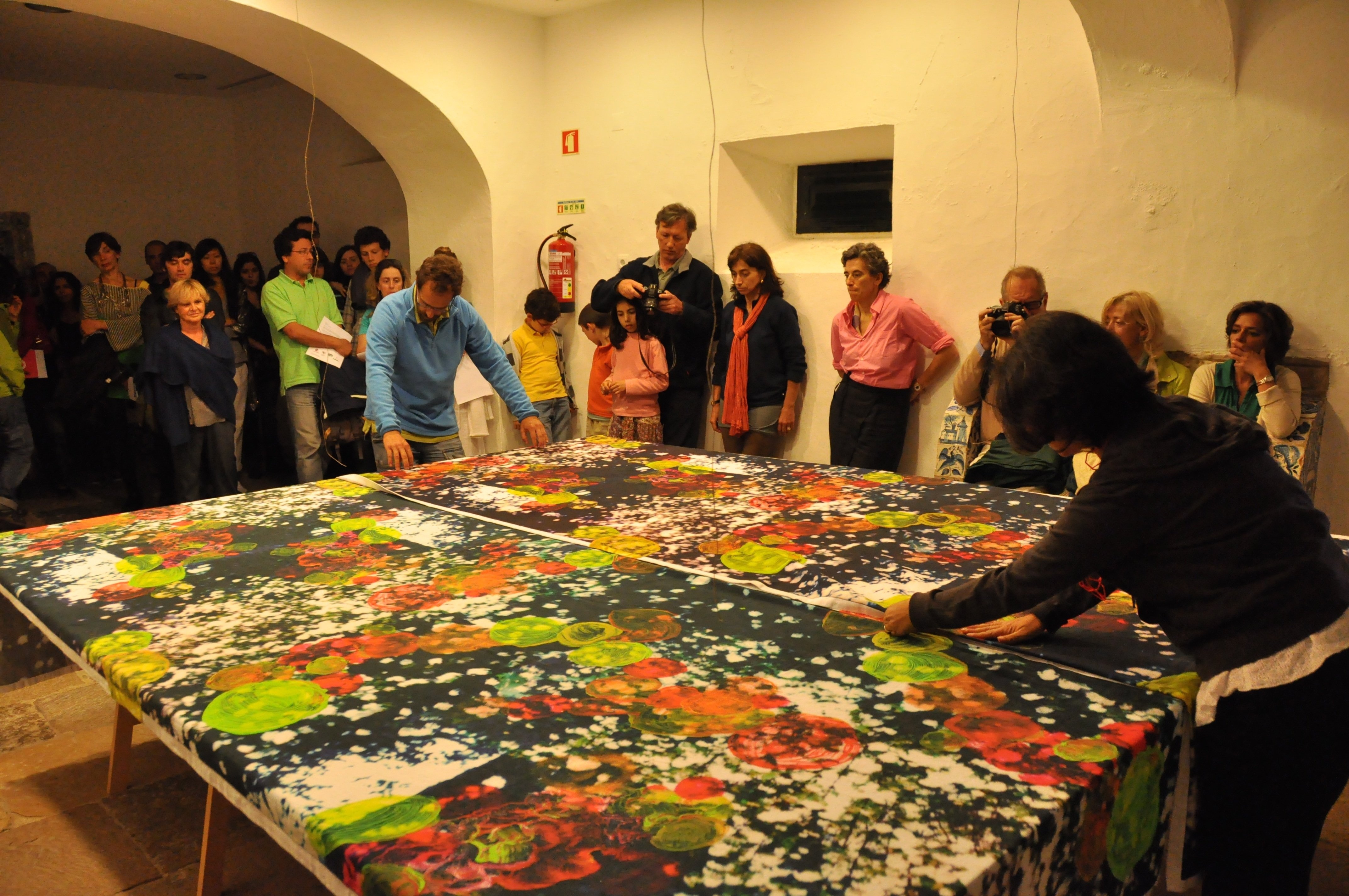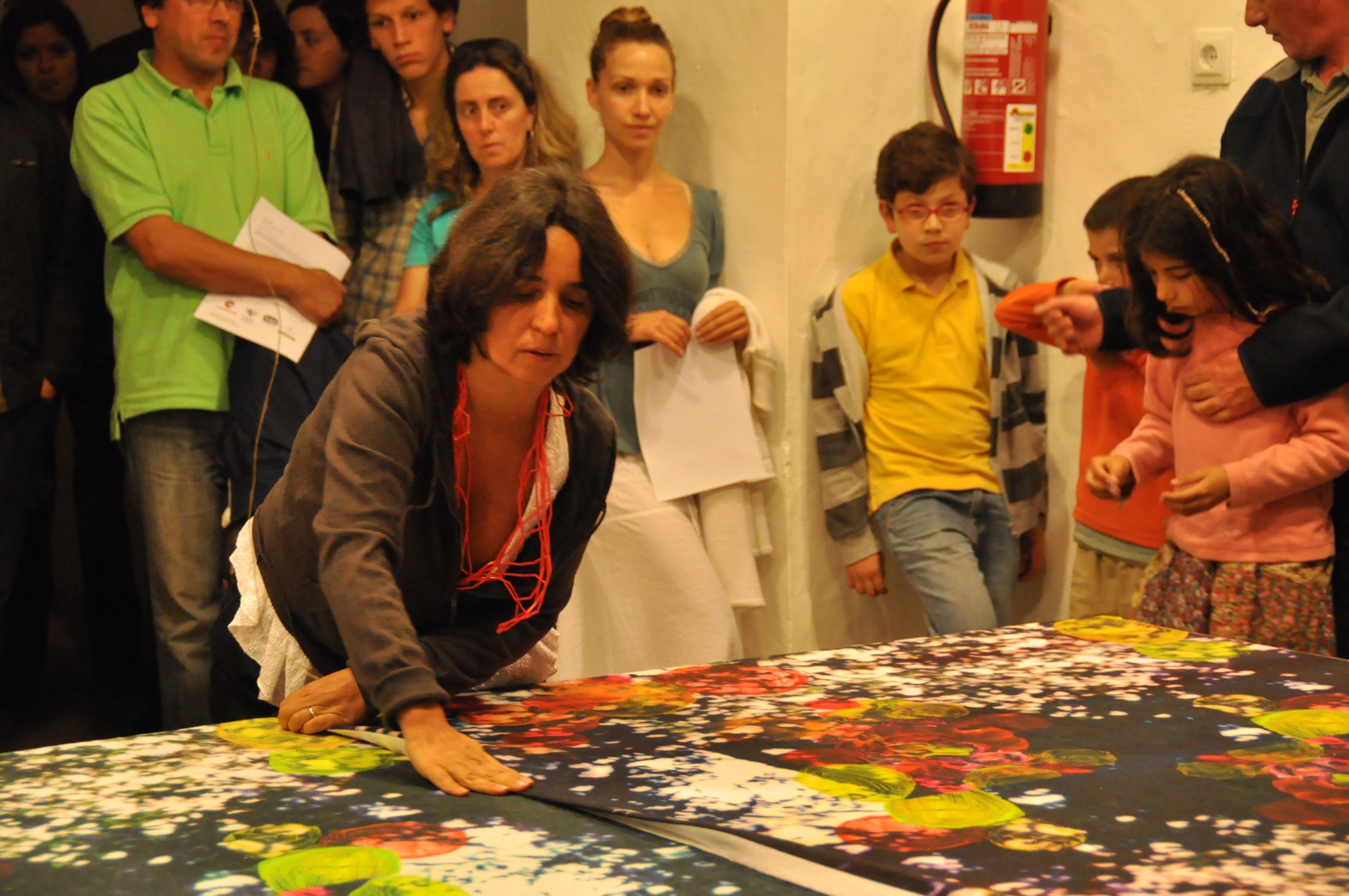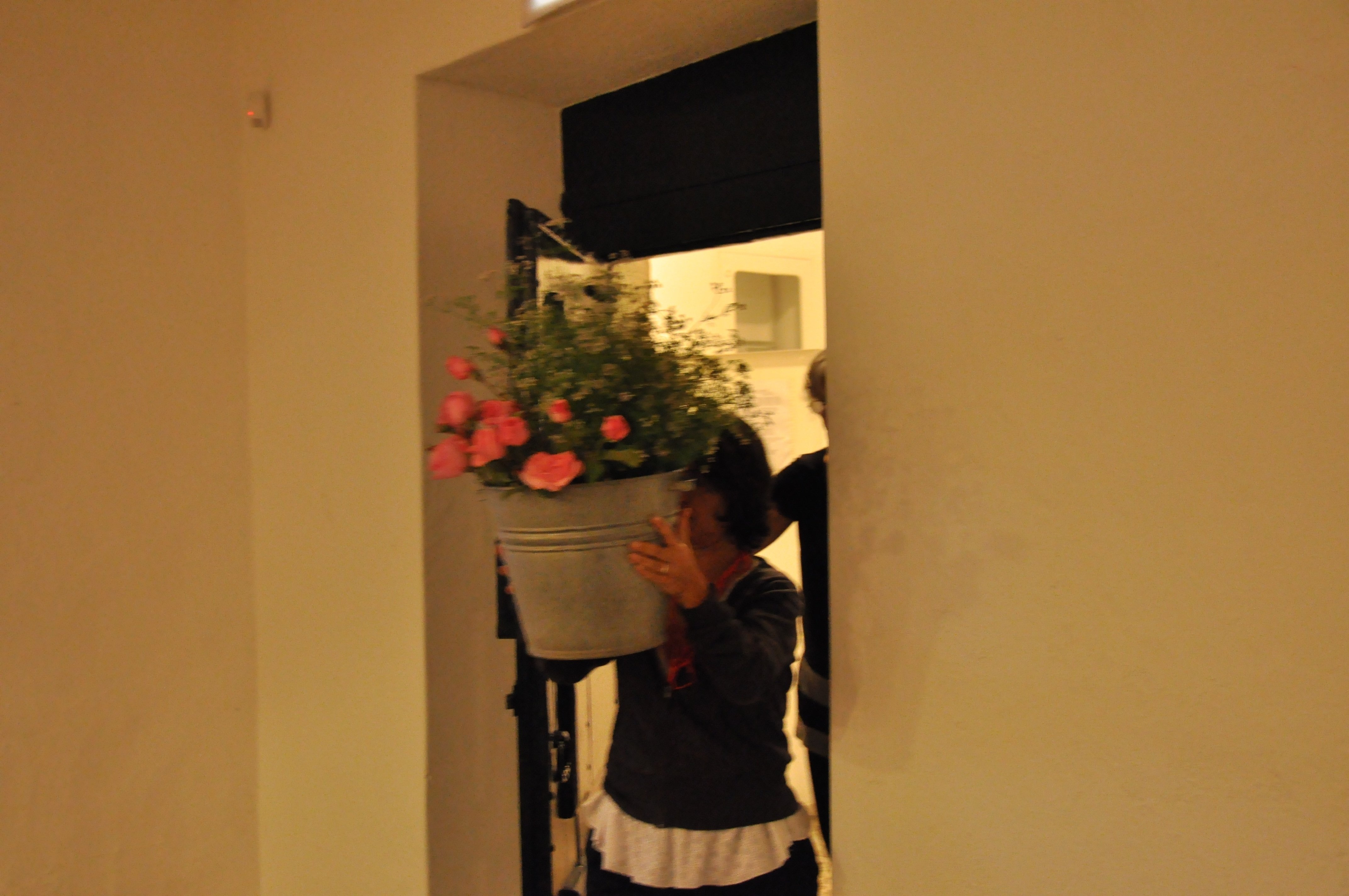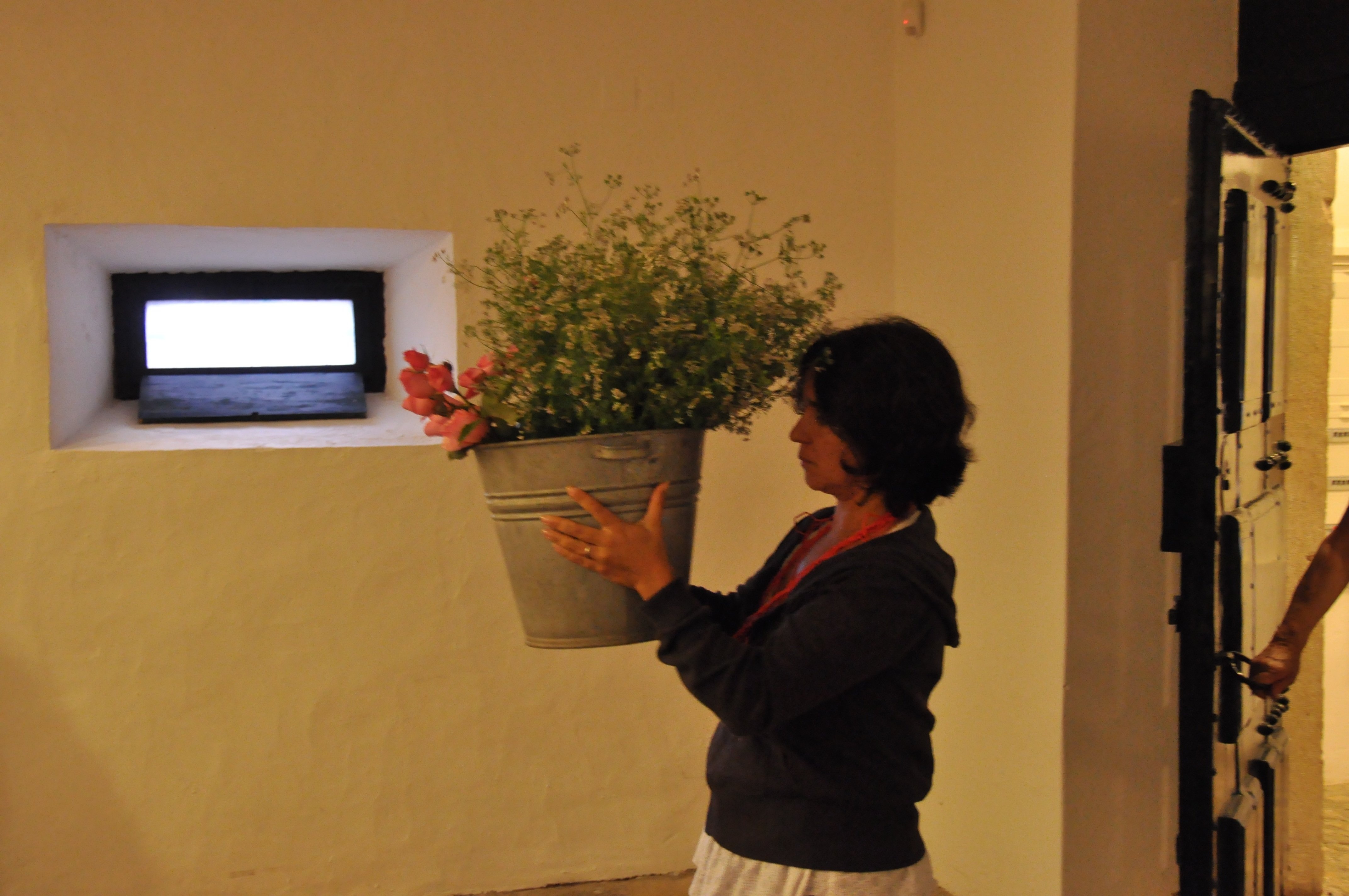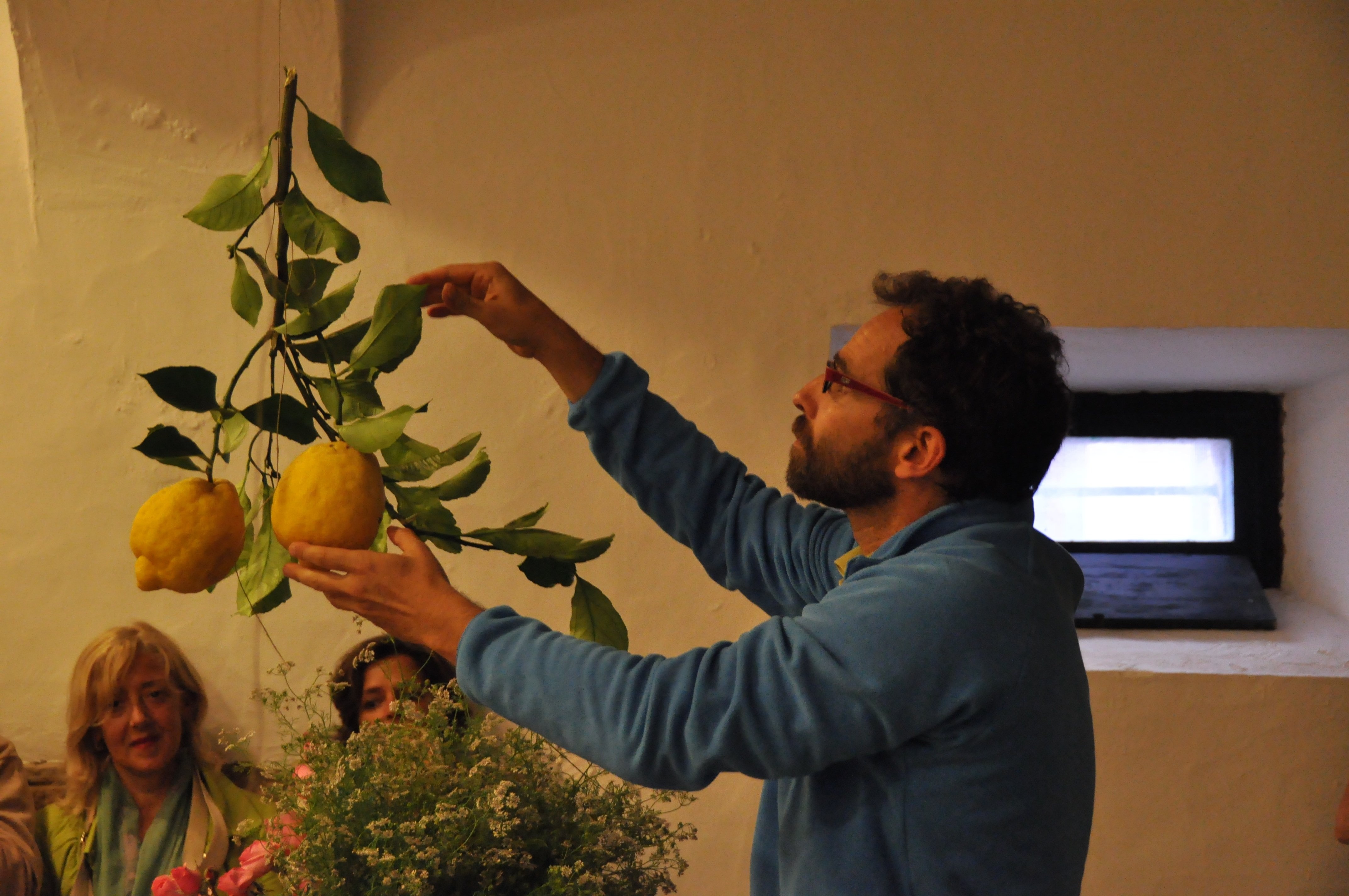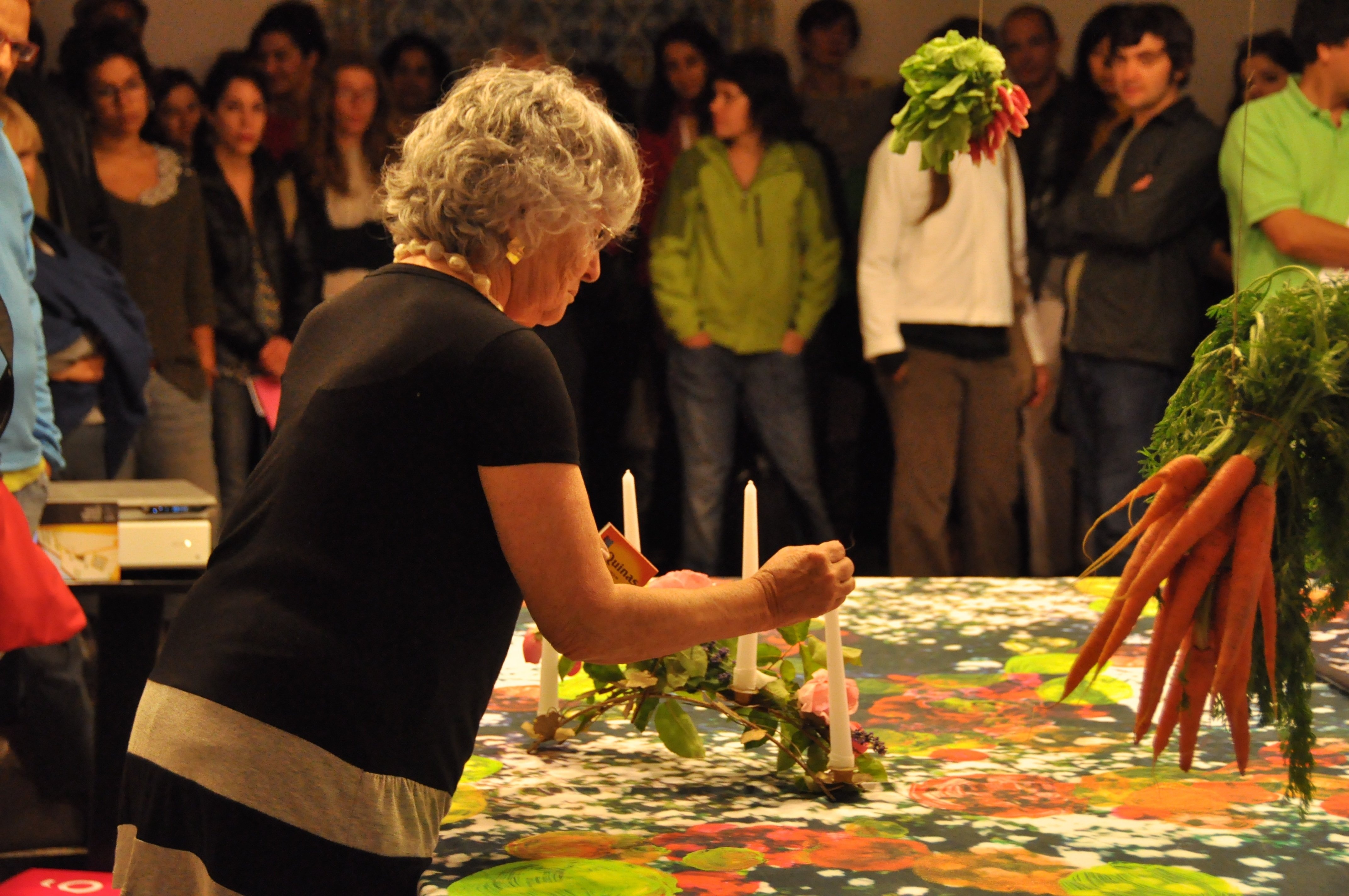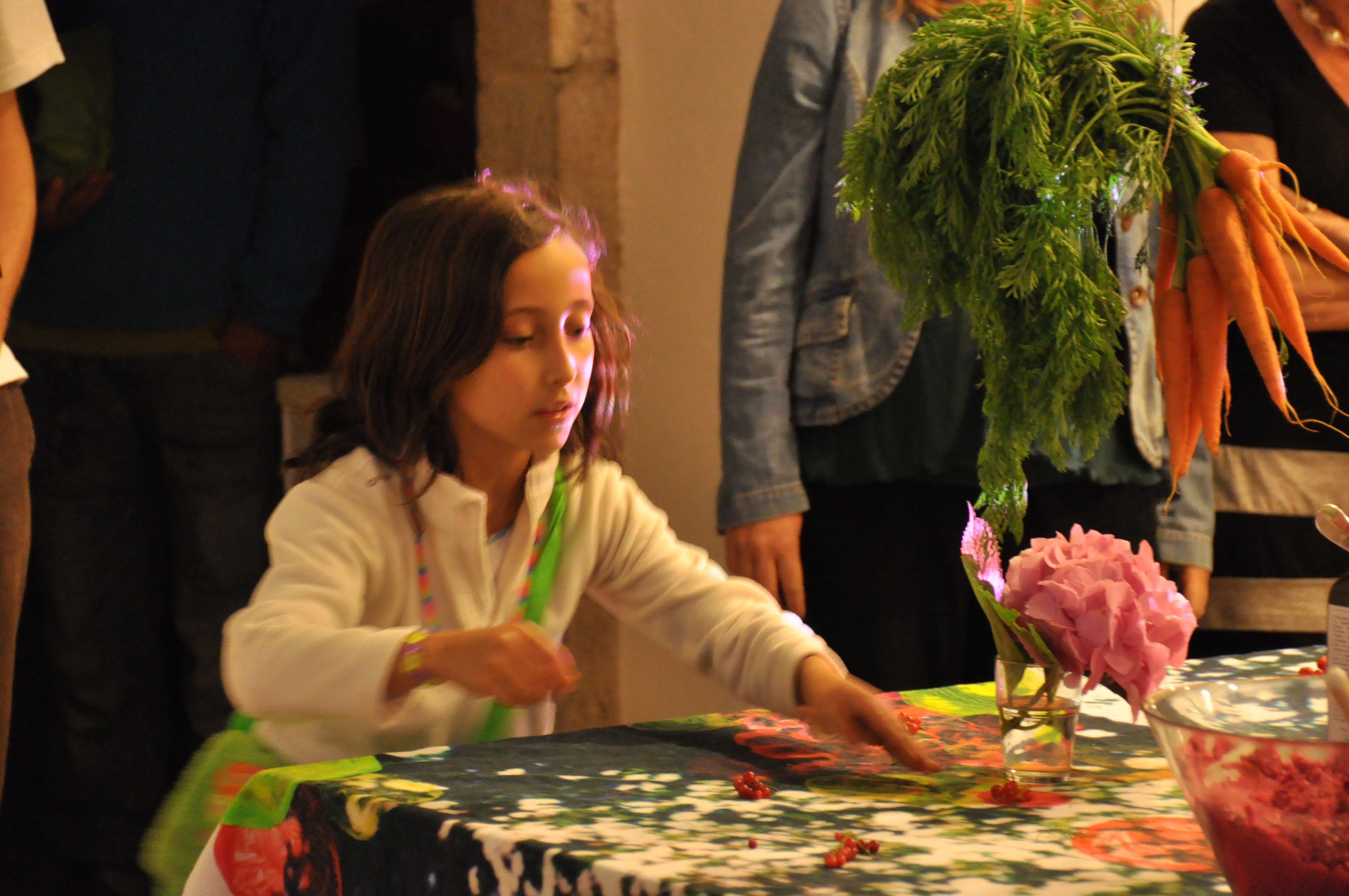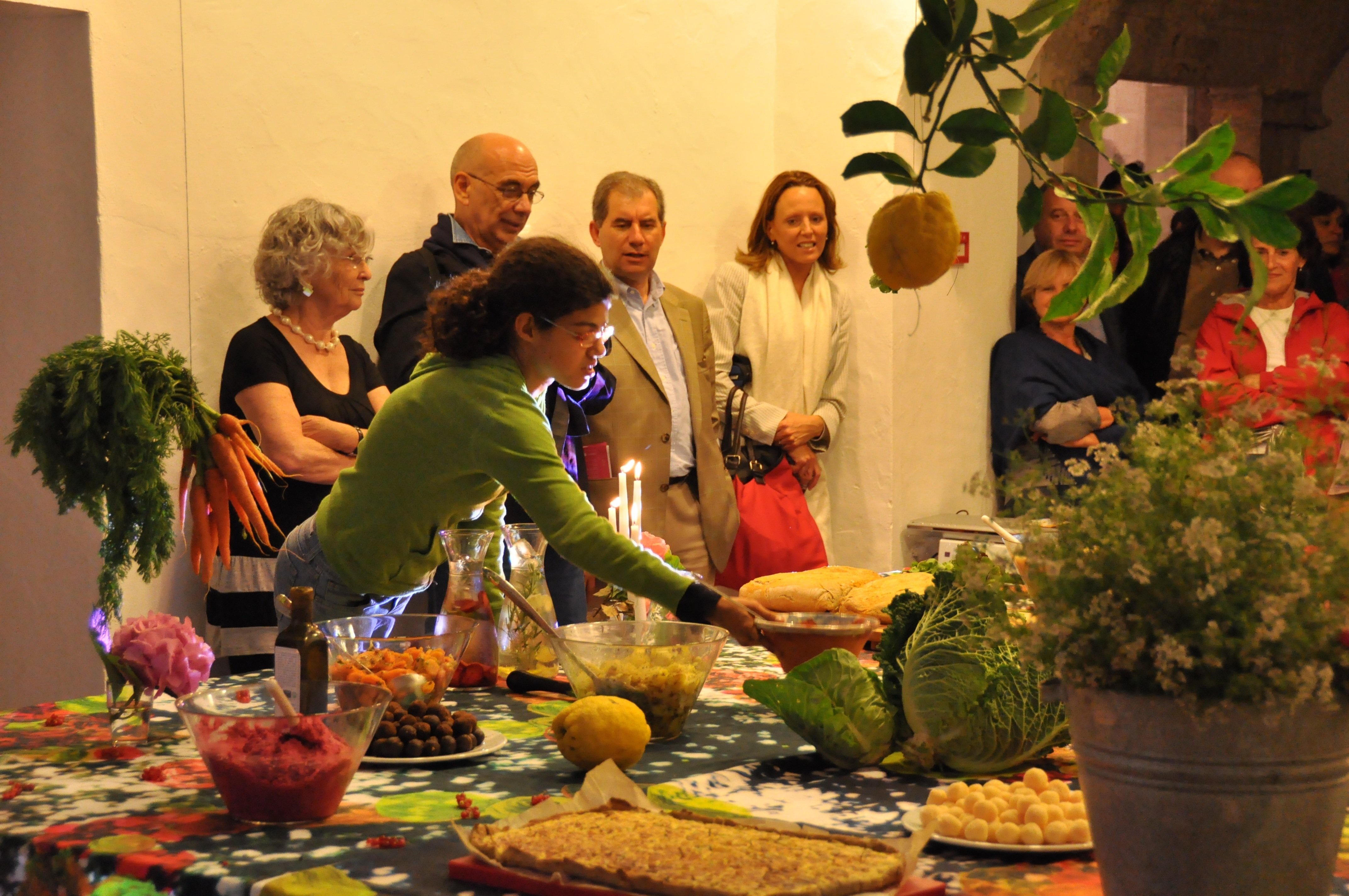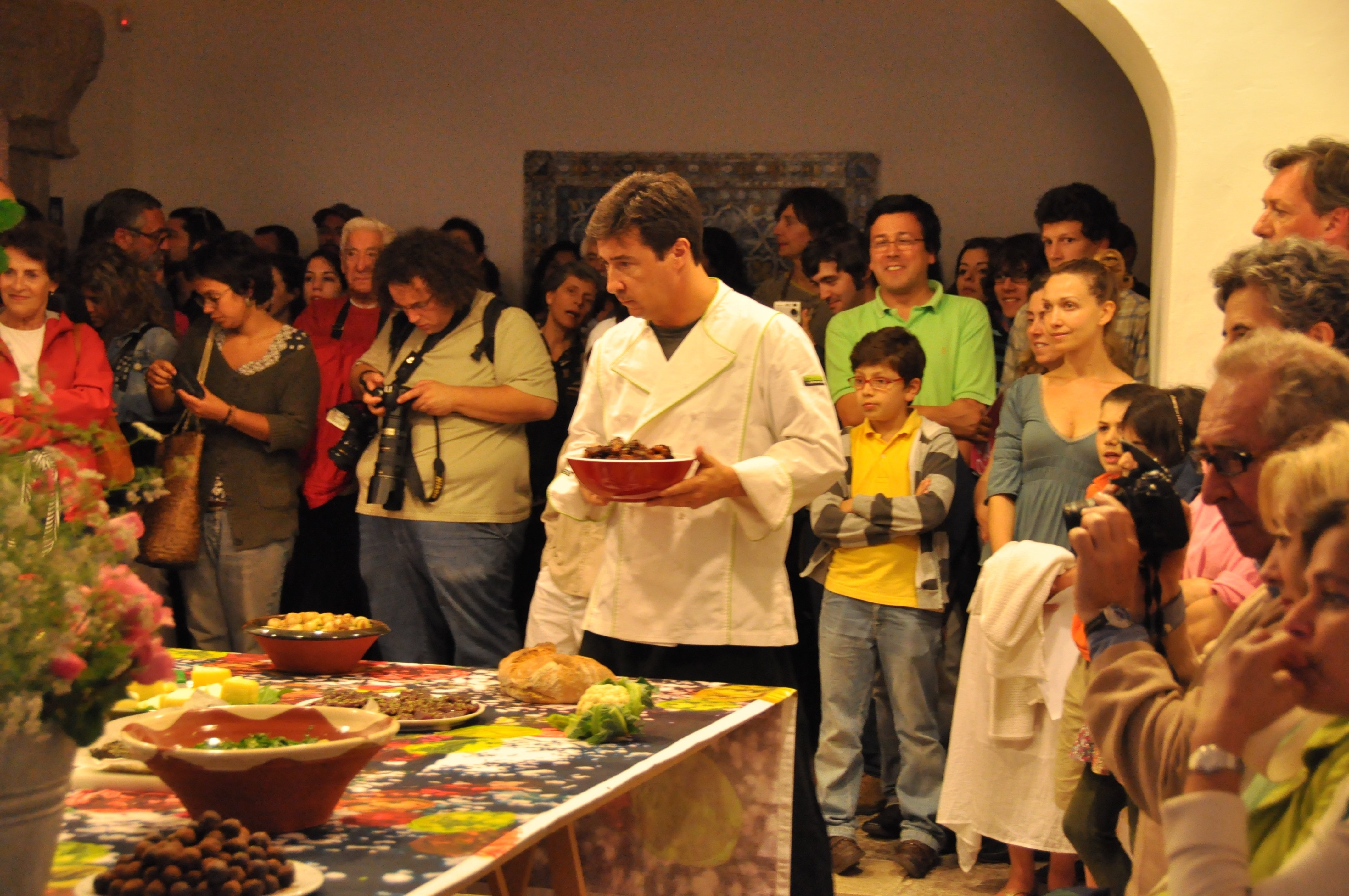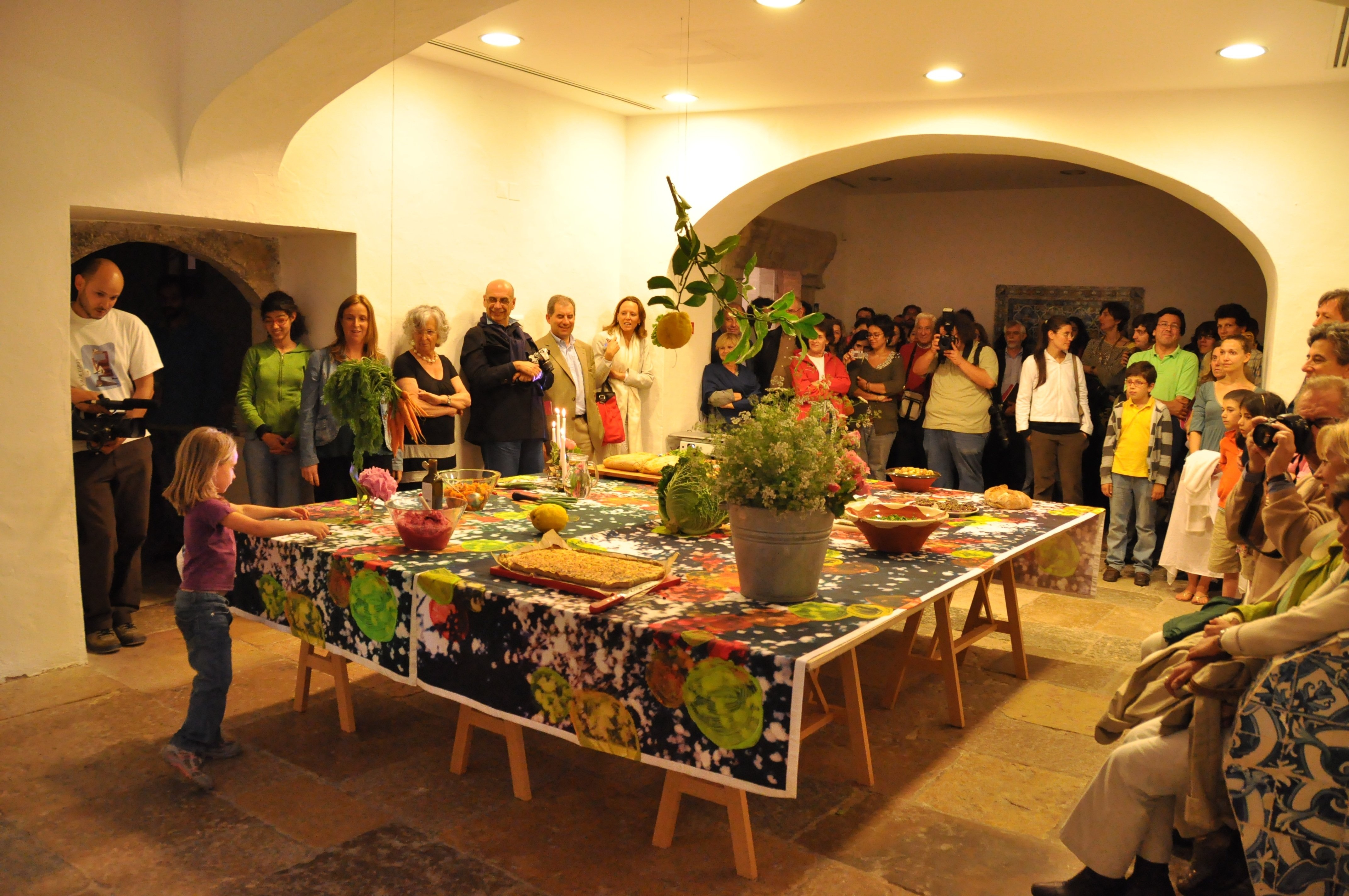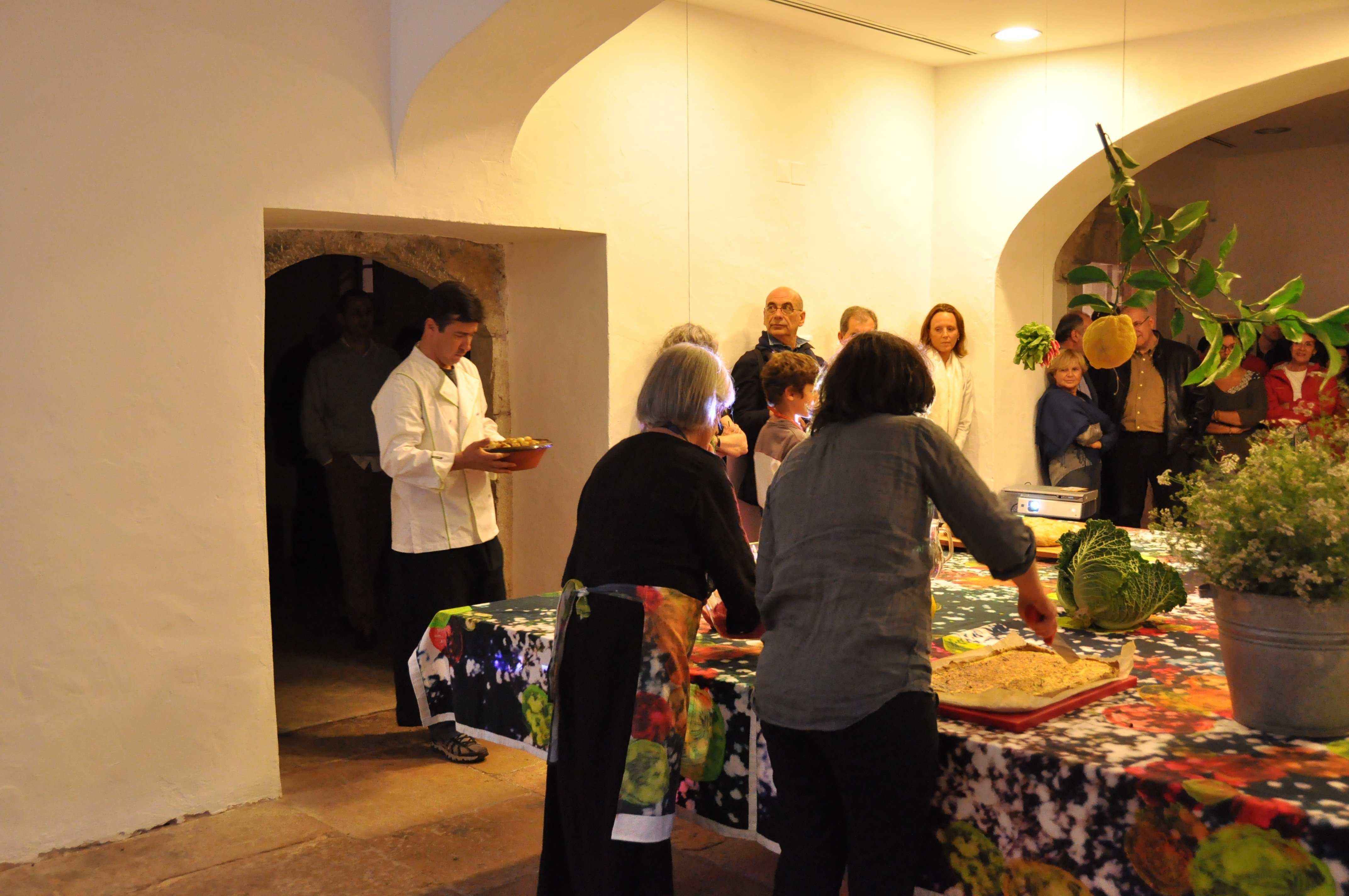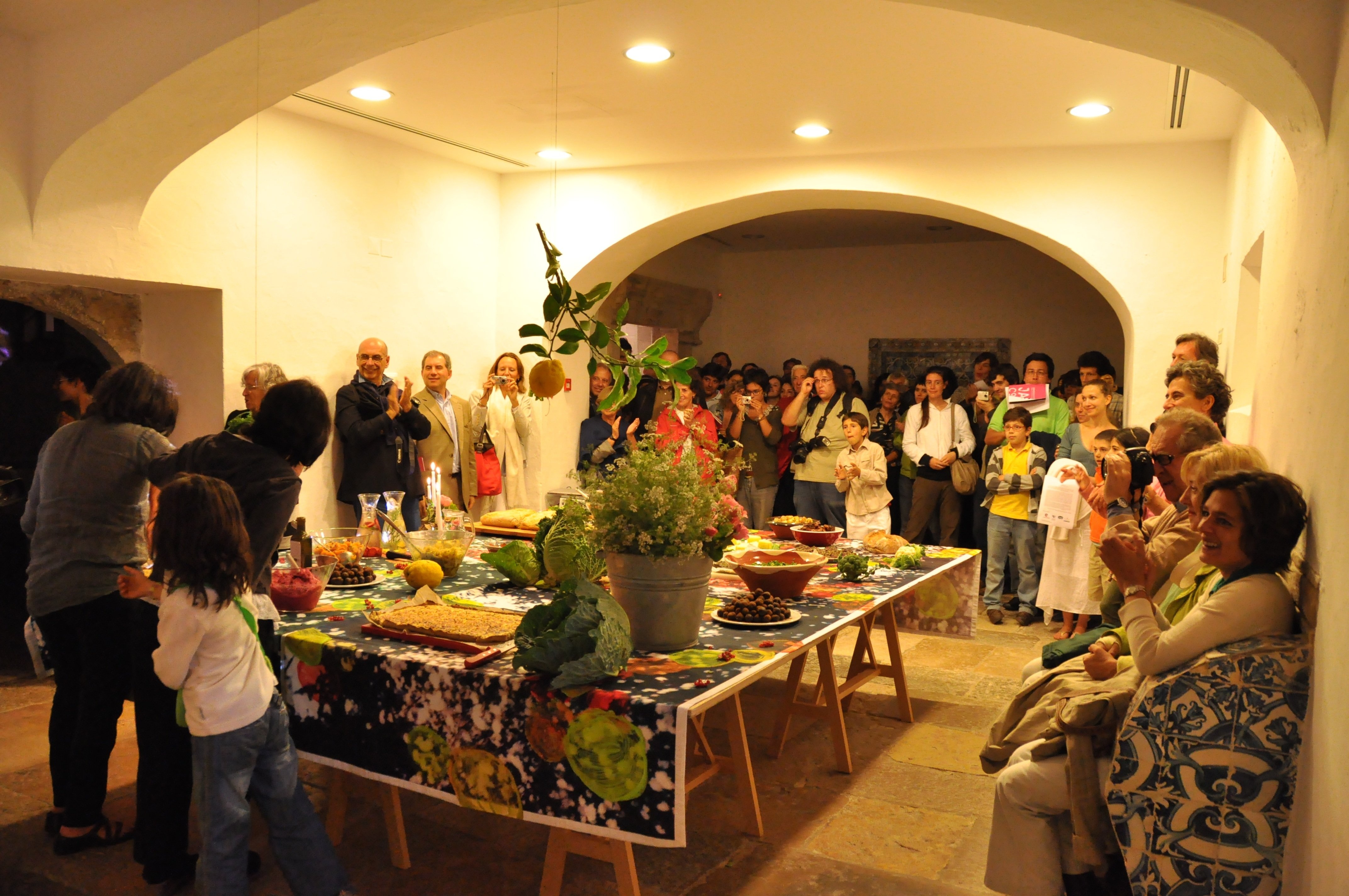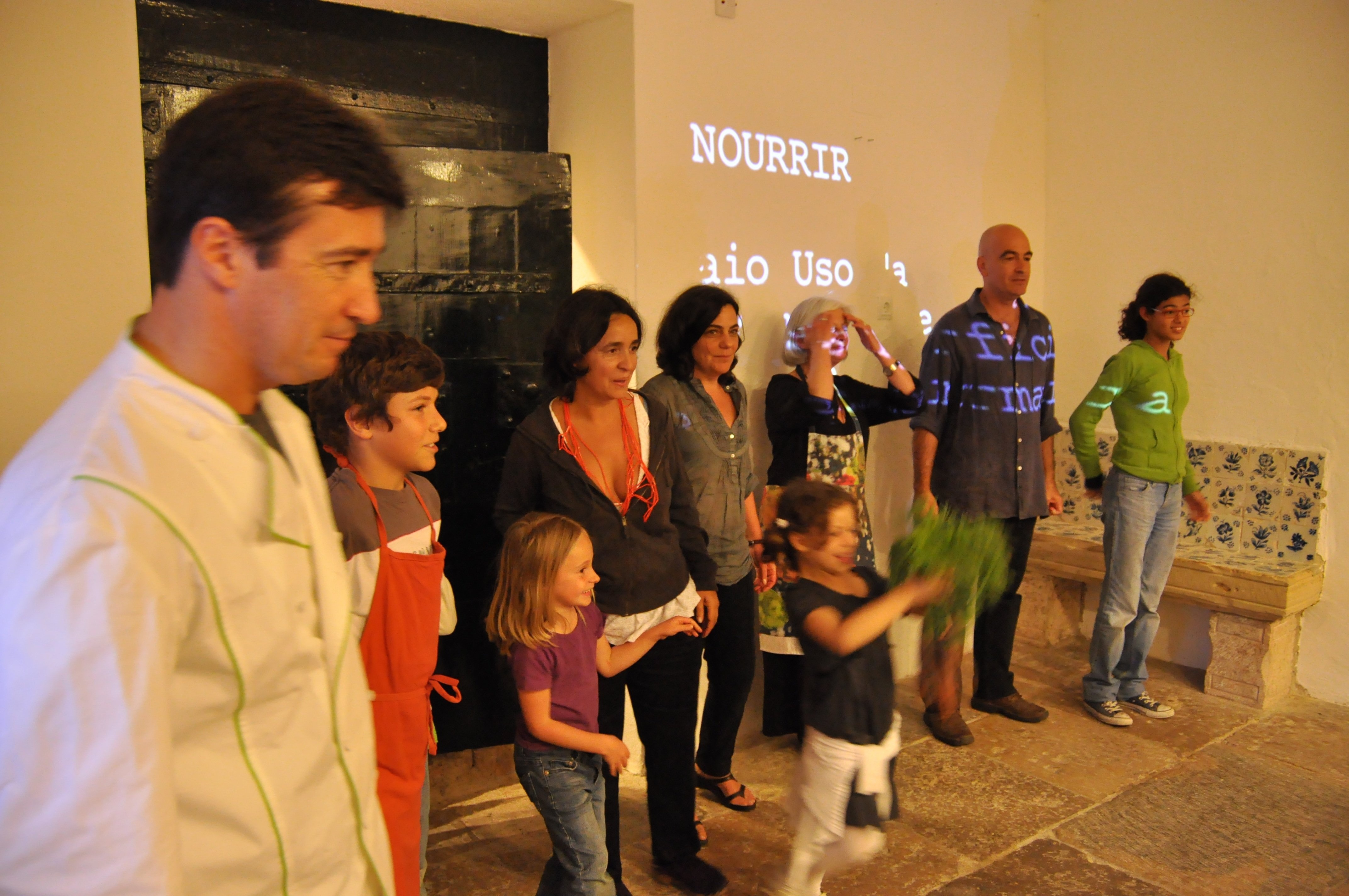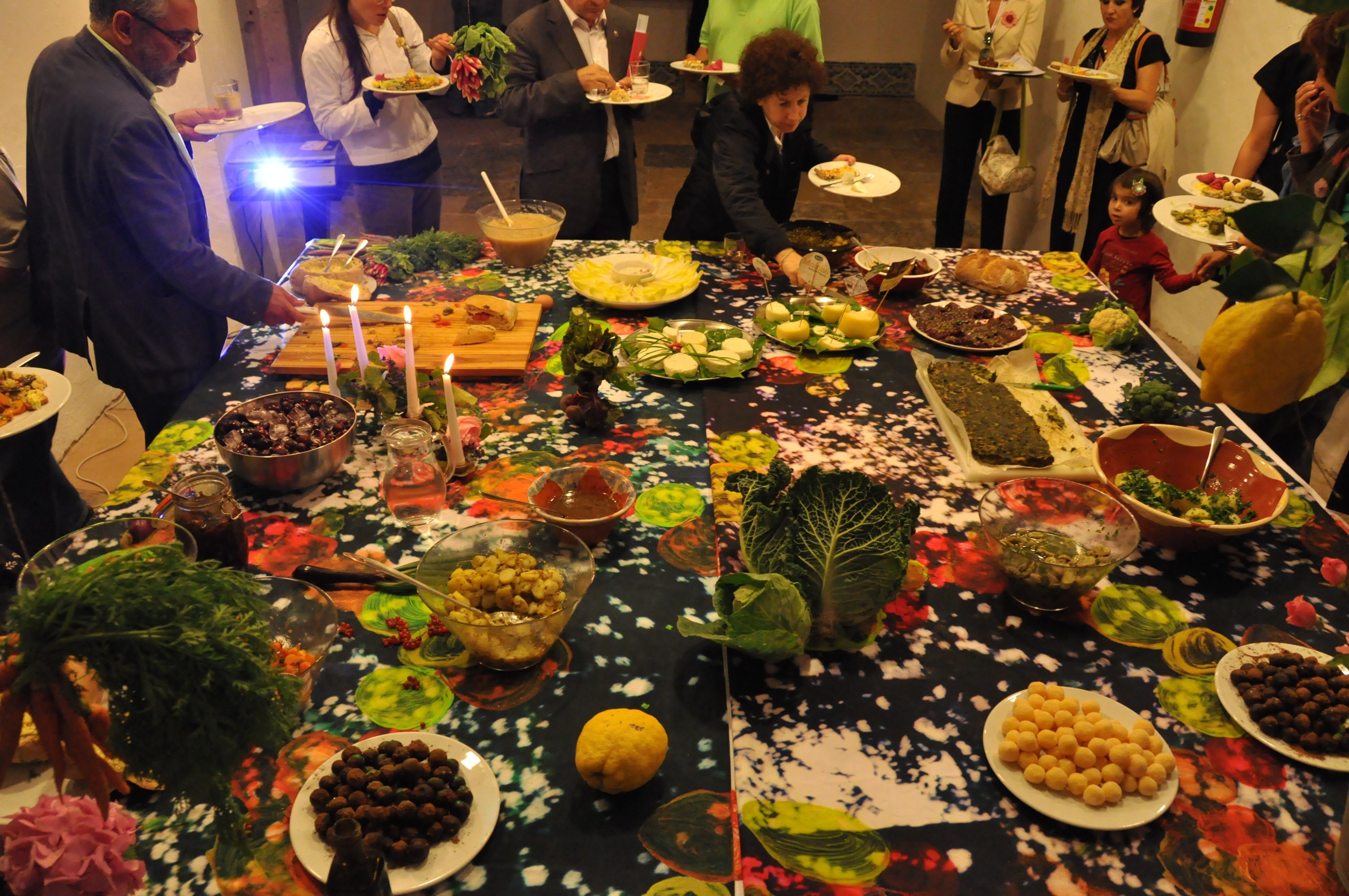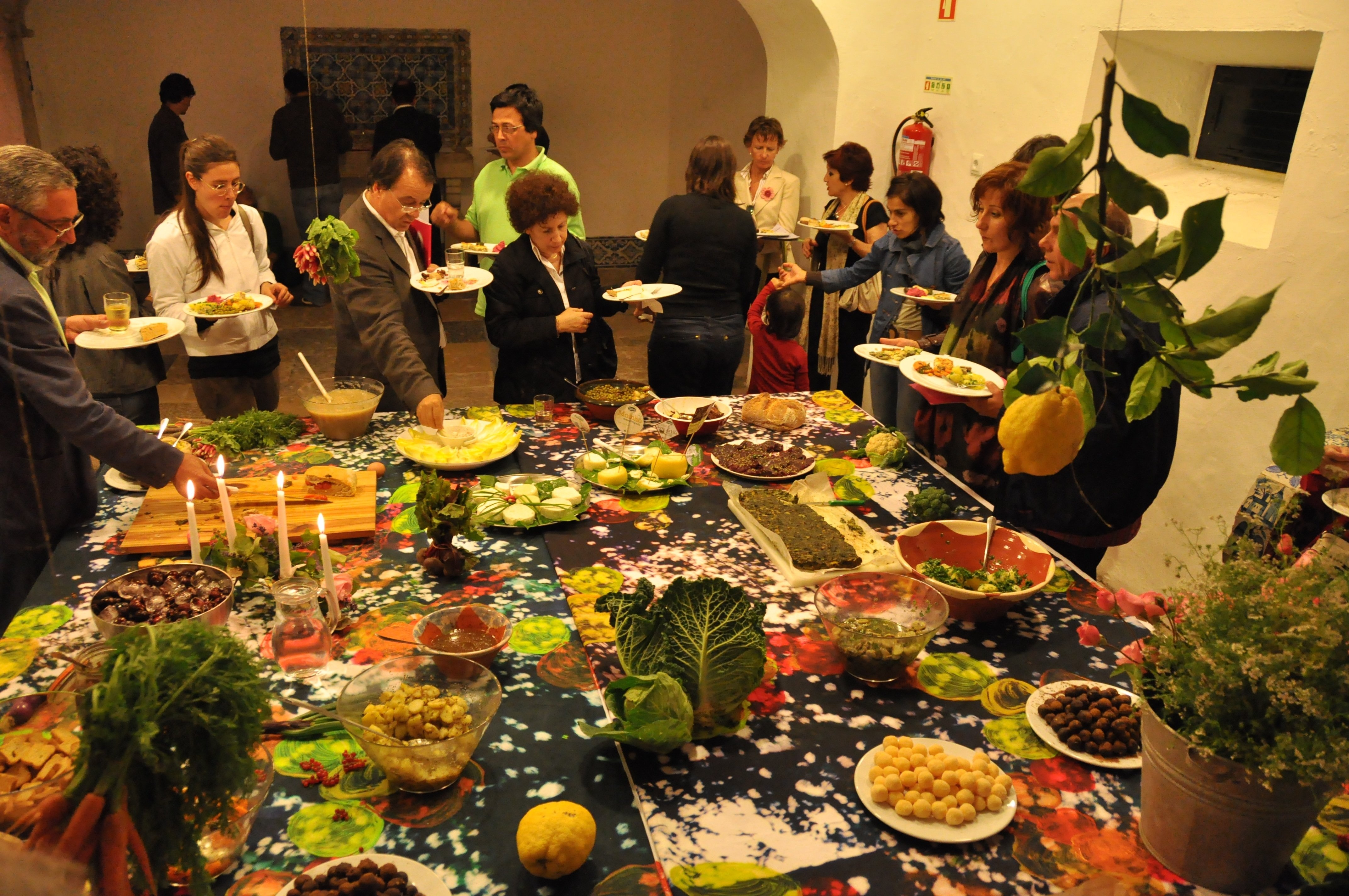O que acontece quando como em Still Life de Marta Wengorovius a arte ocupa não tanto um espaço mas toma corpo na vivência de um tempo? O que acontece quando esse tempo não repetível se torna a exposição – numa experiência visível e vivível? De onde vem este tempo? Talvez seja, então, este o ponto de partida para o surgir de Still Life (mês de Junho) tocar o tempo representado na pintura. Dar a esse tempo a possibilidade de sair da pintura de uma natureza morta e habitar entre nós. E dar-nos a nós a possibilidade de viver esse tempo que era o da construção da pintura.
Um dos géneros autónomos e tradicionais na arte ocidental desde o final do século XVI recebeu em Portugal a designação Natureza Morta – o que os espanhóis trataram como Bodegones e os ingleses como Still Life, com ressonâncias distintas. Esta designação indica já uma preocupação moral e evidência uma relexão sobre a evanescência da vida: a certeza de que tudo passa, tal como a beleza fulgurante dos frutos e das flores sobre a mesa – tantas vezes acompanhadas de velas que se apagam, ampulhetas ou caveiras. Entre os pintores portugueses, a história reconhece Josefa de Óbidos – continuando, e renovando, a obra de seu pai, Baltasar Gomes Figueira – como particularmente sensível e atenta ao modo como objectos, alimentos e flores ganham uma ressonância metafísica. Na performance que Marta Wengorovius realiza em Óbidos, a mesa que irá preparar remete menos para o carácter efémero da existência, não o esquecendo,evidenciando antes a possibilidade de suspender o tempo pela atenção aos gestos comuns e produtos quotidanos. Convoca a atenção para o gesto quotidiano e esquecido de pôr-a-mesa, para os alimentos, a sua preparação e consumo, e para os companheiros – aqueles que partilham do mesmo pão e assim criam comunidade. Neste movimento-envolvimento transforma o espectador em actor e participante, envolvendo-o na própria obra, deixando que ele se alimente – literalmente – dela. Partilha de um ritual, uma liturgia de festa, uma refeição. Uma celebração da vida em redor da mesa.
What happens when as in Still Life Marta Wengorovius art occupies a space not much but it takes experience of a body in time? What happens when that time does not become repeatable exposure – experience in visible and livable? Whence comes this time? Perhaps, then, that the starting point for the emergence of Still Life (June) playing time represented in the painting. Give this time the possibility to leave the painting of a still life and dwell among us. And give to us the possibility to live this time which was the construction of the painting.
A gender independent and traditional Western art since the late sixteenth century in Portugal received the designation Still Lifes – which the Spaniards treated as Bodegones and the English as Still Life , with distinct echoes. This designation already indicates a moral concern and a relexão evidence about the evanescence of life: to make sure everything goes as the dazzling beauty of fruits and flowers on the table – often accompanied by candles that are extinguished, or skulls hourglasses . Among the Portuguese painters, history recognizes Josefa de Óbidos – continuing and renewing the work of his father, Baltazar Gomes Figueira – as particularly sensitive and attentive to the way objects, food and flowers take on a metaphysical resonance. Performance as Martha Wengorovius place in Óbidos, the bureau will prepare refers less to the ephemeral nature of existence, not forgetting, before showing the possibility of suspending the time for attention to gestures and common products quotidanos. Summons attention to the everyday gestures and forgotten to put-a-table for the food, its preparation and consumption, and the comrades – those who share the same bread and thus create community. -Involvement in this movement turns the spectator into a participant and actor, engaging in the work itself, leaving it to feed – literally – of her. Sharing a ritual, a celebration of the liturgy, a meal. A celebration of life around the table.
- + PT
-
O que acontece quando como em Still Life de Marta Wengorovius a arte ocupa não tanto um espaço mas toma corpo na vivência de um tempo? O que acontece quando esse tempo não repetível se torna a exposição – numa experiência visível e vivível? De onde vem este tempo? Talvez seja, então, este o ponto de partida para o surgir de Still Life (mês de Junho) tocar o tempo representado na pintura. Dar a esse tempo a possibilidade de sair da pintura de uma natureza morta e habitar entre nós. E dar-nos a nós a possibilidade de viver esse tempo que era o da construção da pintura.
Um dos géneros autónomos e tradicionais na arte ocidental desde o final do século XVI recebeu em Portugal a designação Natureza Morta – o que os espanhóis trataram como Bodegones e os ingleses como Still Life, com ressonâncias distintas. Esta designação indica já uma preocupação moral e evidência uma relexão sobre a evanescência da vida: a certeza de que tudo passa, tal como a beleza fulgurante dos frutos e das flores sobre a mesa – tantas vezes acompanhadas de velas que se apagam, ampulhetas ou caveiras. Entre os pintores portugueses, a história reconhece Josefa de Óbidos – continuando, e renovando, a obra de seu pai, Baltasar Gomes Figueira – como particularmente sensível e atenta ao modo como objectos, alimentos e flores ganham uma ressonância metafísica. Na performance que Marta Wengorovius realiza em Óbidos, a mesa que irá preparar remete menos para o carácter efémero da existência, não o esquecendo,evidenciando antes a possibilidade de suspender o tempo pela atenção aos gestos comuns e produtos quotidanos. Convoca a atenção para o gesto quotidiano e esquecido de pôr-a-mesa, para os alimentos, a sua preparação e consumo, e para os companheiros – aqueles que partilham do mesmo pão e assim criam comunidade. Neste movimento-envolvimento transforma o espectador em actor e participante, envolvendo-o na própria obra, deixando que ele se alimente – literalmente – dela. Partilha de um ritual, uma liturgia de festa, uma refeição. Uma celebração da vida em redor da mesa.
- + EN
-
What happens when as in Still Life Marta Wengorovius art occupies a space not much but it takes experience of a body in time? What happens when that time does not become repeatable exposure – experience in visible and livable? Whence comes this time? Perhaps, then, that the starting point for the emergence of Still Life (June) playing time represented in the painting. Give this time the possibility to leave the painting of a still life and dwell among us. And give to us the possibility to live this time which was the construction of the painting.
A gender independent and traditional Western art since the late sixteenth century in Portugal received the designation Still Lifes – which the Spaniards treated as Bodegones and the English as Still Life , with distinct echoes. This designation already indicates a moral concern and a relexão evidence about the evanescence of life: to make sure everything goes as the dazzling beauty of fruits and flowers on the table – often accompanied by candles that are extinguished, or skulls hourglasses . Among the Portuguese painters, history recognizes Josefa de Óbidos – continuing and renewing the work of his father, Baltazar Gomes Figueira – as particularly sensitive and attentive to the way objects, food and flowers take on a metaphysical resonance. Performance as Martha Wengorovius place in Óbidos, the bureau will prepare refers less to the ephemeral nature of existence, not forgetting, before showing the possibility of suspending the time for attention to gestures and common products quotidanos. Summons attention to the everyday gestures and forgotten to put-a-table for the food, its preparation and consumption, and the comrades – those who share the same bread and thus create community. -Involvement in this movement turns the spectator into a participant and actor, engaging in the work itself, leaving it to feed – literally – of her. Sharing a ritual, a celebration of the liturgy, a meal. A celebration of life around the table.

